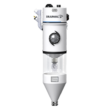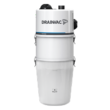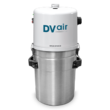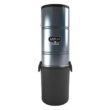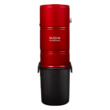As you are looking for a central vacuum, you will often see measuring units used in electricity such as amps, volts, watts and airwatts. This article explains these four data values while linking them to their role in the field of central vacuuming.
Basically, amperage represents the intensity of an electric current. To better illustrate this theoretical notion, we can compare the electric current to a river stream: the electric current's intensity corresponds to the water flow of the river. The wider the river, the greater the flow.
In order to understand the electric potential, the river example is once again very useful. In order to get a water stream, you must have an altitude difference between two points; in other words, you need a slope to allow the water to flow. The electric potential (or voltage) is similar to a slope: it is the pressure that allows the electricity to circulate in the electrical conductor.
In addition, the voltage varies depending on the region: for example, it goes from 120V in North America to 240V in Europe, Asia and Africa. However, a high voltage unit does not mean that it has a higher power, because a lower amperage is used in these regions to give an equivalent power in Watt.
What Does the Number of Watts Mean?
The watts express the power of the electric current that animates a household appliance such as a central vacuum. This unit of measurement is obtained by multiplying the amperage with the voltage. Unlike the popular belief, watts are not the indicator of the power of a central vacuum: they rather indicate the electrical power consumed by the device in order to operate.
What is the Difference Between Watts and Airwatts?
To know the overall performance of a central vacuum, you must look at the airwatts data, not the watts. This piece of data is obtained with a calculation involving the air flow and the water column. It differs from watts which only indicate the electrical power required to operate a device.
In short, when you compare central vacuums, do not make the mistake of choosing one because of its large number of watts: on the contrary, the ideal central vacuum would be one that does not require many watts while offering optimal power in airwatt! For more information, do not hesitate to contact us and we will be happy to help you.









